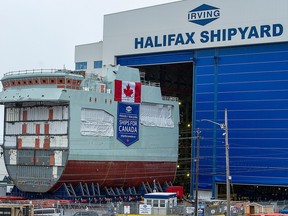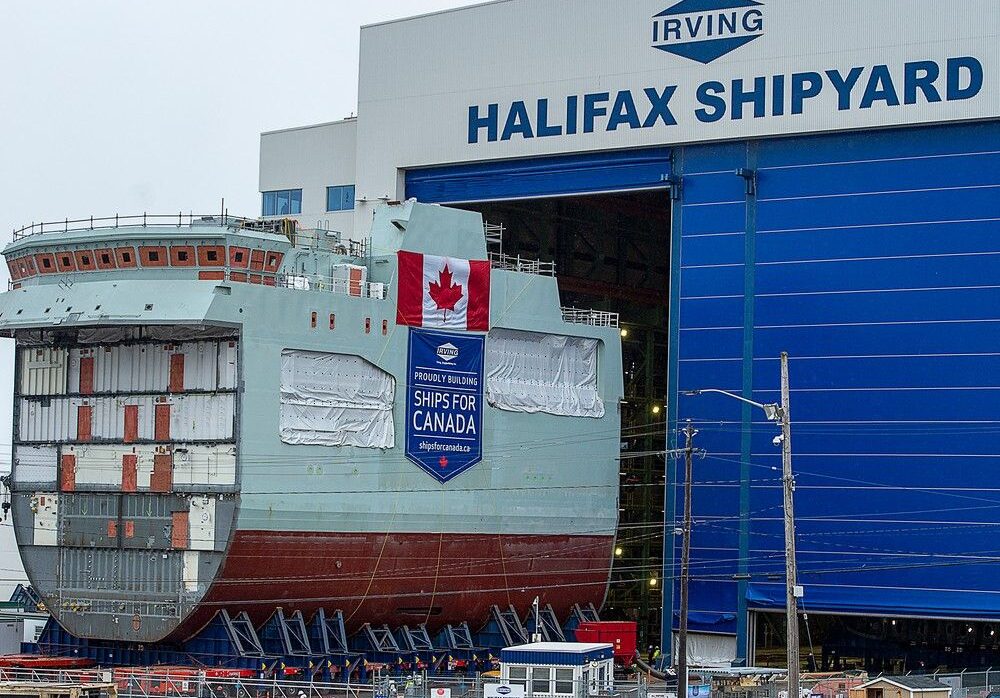Canadian government doesn’t scale back on Chinese steel in new navy patrol ships
Steel for Arctic and Offshore Patrol Ships was bought from European suppliers, with about 17 per cent of that being purchased from China.
Published Apr 04, 2023 • Last updated 6 hours ago • 3 minute read

Canada has yet to determine how much Chinese steel and equipment will go into its new naval warships, but it didn’t scale back on such products for its Arctic and offshore patrol vessels even though concerns were raised in 2018.
Advertisement 2
THIS CONTENT IS RESERVED FOR SUBSCRIBERS ONLY
Subscribe now to read the latest news in your city and across Canada.
- Unlimited online access to articles from across Canada with one account
- Get exclusive access to the Ottawa Citizen ePaper, an electronic replica of the print edition that you can share, download and comment on
- Enjoy insights and behind-the-scenes analysis from our award-winning journalists
- Support local journalists and the next generation of journalists
- Daily puzzles including the New York Times Crossword
SUBSCRIBE TO UNLOCK MORE ARTICLES
Subscribe now to read the latest news in your city and across Canada.
- Unlimited online access to articles from across Canada with one account
- Get exclusive access to the Ottawa Citizen ePaper, an electronic replica of the print edition that you can share, download and comment on
- Enjoy insights and behind-the-scenes analysis from our award-winning journalists
- Support local journalists and the next generation of journalists
- Daily puzzles including the New York Times Crossword
REGISTER TO UNLOCK MORE ARTICLES
Create an account or sign in to continue with your reading experience.
- Access articles from across Canada with one account
- Share your thoughts and join the conversation in the comments
- Enjoy additional articles per month
- Get email updates from your favourite authors
Canada-Chinese relations have been rocky for several years. In October 2022, Chief of the Defence Staff Gen. Wayne Eyre told MPs that China considered itself to be at war with the West and that Canada must rise to meet the challenge.
But that hasn’t changed efforts to source equipment and steel from China for the Canadian navy and Canadian Coast Guard’s new Arctic and Offshore Patrol Ships, or AOPS.
Steel for AOPS was bought from European suppliers, with about 17 per cent of that being purchased from China. In addition, other equipment on the AOPS, from lifeboats to pipes and fittings to anchors and towing systems, was also produced by China, according to National Defence documents.
The accounting of Chinese products on AOPS, first reported by CBC in 2018, was done after concerns were raised by the United States about the involvement of Chinese firms in providing products for its defence industries. Despite the inquiries to the Department of National Defence by then International Trade Minister François-Philippe Champagne, there was no change of course on the AOPS program.
Article content
Article content
“With respect to the sourcing of materials or products used for the construction of the Arctic and Offshore Patrol Ships, there are no changes from what was previously reported,” Public Services and Procurement Canada official Stefanie Hamel confirmed.
Although there are materials, equipment and products from Chinese manufacturers on the vessels being constructed by Irving Shipbuilding, there is nothing of a sensitive nature, Hamel said.
Irving spokesperson Mary Keith said the shipyard had not yet determined how much Chinese steel or other components would be on the new Canadian Surface Combatants. That program, estimated to cost more than $80 billion, will involve the construction of warships to replace the navy’s current fleet of frigates.
Article content
The U.S. has a “Buy American” policy requiring only U.S.-produced steel in its warships. Britain used domestic steel in its aircraft carriers with steel from firms in France and Sweden for other military equipment.
But China has become an economic powerhouse over the decades thanks to foreign investment, increased productivity and technological innovations. It produces more than half of the world’s steel and is the largest producer of aluminum.
That has ramifications for defence. In December 2021, Australian news outlets revealed that country’s new naval patrol boats were being delayed because of poor-quality aluminum imported from China.
In September 2022, the Pentagon halted deliveries of the F-35 stealth fighter after discovering an alloy from China was used in the production of one aircraft part. Deliveries were restarted after the U.S. determined the material did not present a security issue for the planes, which Canada is also buying.
Article content
Catherine Cobden, president of the Canadian Steel Producers Association, said she couldn’t speak about specific projects such as AOPS or the Canadian Surface Combatant, but she noted that the association had been raising concerns to the federal government about the significant influx of foreign-made steel into the Canadian market.
Canadian producers continue to be undercut by countries with a history of unfair trade practices, Cobden said. In 2022 alone, hundreds of thousands of tonnes of steel came from countries with active anti-dumping cases against them.
In addition, Canadian steel producers are actively trying to reduce climate emissions as well as facing a carbon tax as part of government efforts to fight climate change, but offshore steel producers don’t face the same rules and surcharges.
As a result, domestic firms are losing market share to high carbon, offshore steel at an unprecedented rate, Cobden said. “Our view is that the government needs to ensure they are purchasing green steel. (Canadian firms) have some of the greenest steel.”


